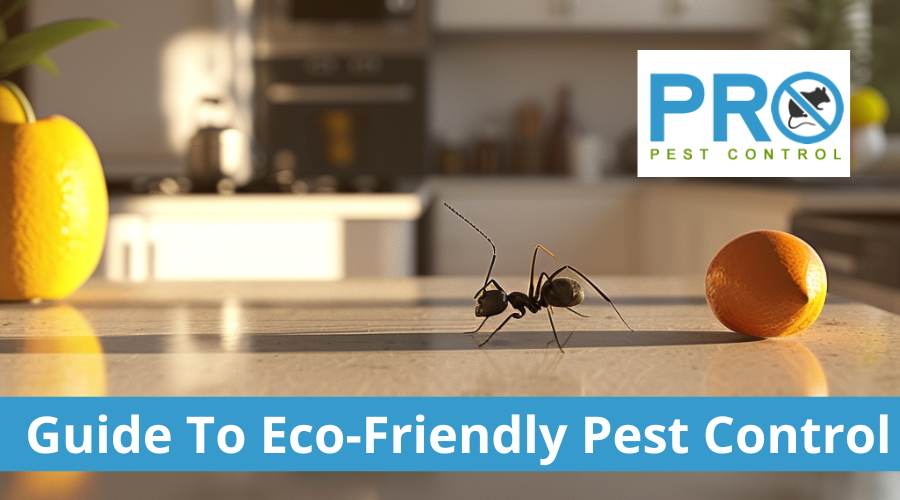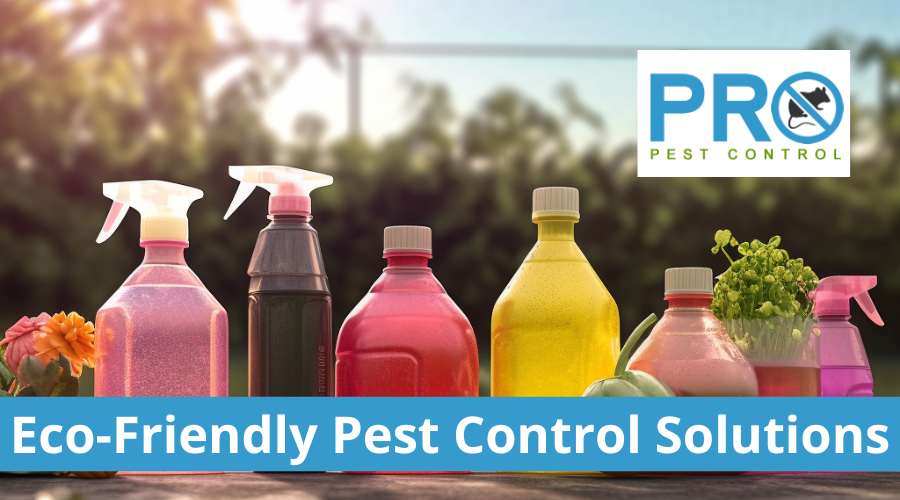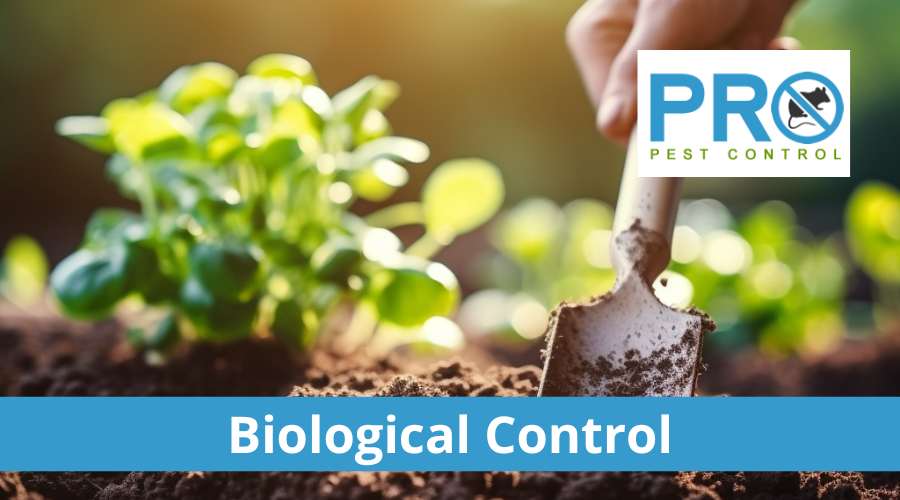Guide To Eco-Friendly Pest Control
Green Solutions for Common Pests
Pests can be a nuisance, but many conventional pest control methods come with their own set of problems. Synthetic pesticides may eliminate them, but they also pose dangers to humans, pets, and the environment.
An eco-friendly approach focuses on prevention and natural pest deterrents to create a safe, healthy home.
Disadvantages of Synthetic Chemicals
Many common pesticides contain harsh chemicals like organophosphates and carbamates. While effective at killing pests, these substances are also toxic for:
- Humans – Exposure, even at low levels, is linked to headaches, nausea, and neurological problems over time.
- Pets – Cats and dogs can develop seizures and organ damage if they ingest pesticides. Residues on floors and counters are risky.
- Environment – Chemical pesticides get into soil and water systems, harming plants and aquatic life. They reduce biodiversity in ecosystems.
Repeated use of these synthetic toxins allows pests to develop resistance too. This creates an endless cycle of stronger pesticides needed to achieve the same effects! It’s clear these traditional options come with too many health and environmental costs.
Benefits of Natural Pest Control Methods
Eco-friendly pest control methods tap into nature’s defense systems. The focus is on:
- Prevention – Denying access, removing food sources, and sealing cracks shuts down conditions that attract pests in the first place. An ounce of prevention is truly worth a pound of cure!
- Deterrents – Natural botanical oils, inorganic dusts like diatomaceous earth, pepper, and strong smells repel invaders without toxicity.
- Traps – Pheromones and non-toxic baits lure pests to traps for safe removal from your home.
- Topical Treatments – Boric acid powder and silica gel target roaches and ants physically but are low risks for people and pets.
- Biological – Natural predators like ladybugs or nematodes can wipe out pest populations without chemicals.
This gentle, multiple-tier approach may take longer to work but pays off in safer indoor spaces. And you avoid contaminating the outdoors with harsh toxins. An eco-friendly program stops pests while protecting what matters most – your family and the environment.
Eco-Friendly Pest Control Solutions
Use these natural ingredients to tackle pests:
1. Coffee Grounds
- Spread around healthy gardens or corners where ants enter. The caffeine and aroma make ants avoid the area.
2. Mint
- Plant mint near doors or other access points. The mint smell covers up other smells to mask pests.
3. Cloves
- Use as whole spices or grind into a powder and spread like coffee grounds near corners and doors. Cloves contain eugenol which irritates pests.
4. Hot Pepper
- Make a powder or pepper spray from cayenne, jalapeños, chili powder. Spray it in cracks. Reapply after rain. Burns pest mouthparts.
5. Apple Cider Vinegar
- Mix water and vinegar 50/50 in glass jar. Cover jar but punch small holes in lid. Trap gnats and fruit flies. The combo attracts then drowns them.
6. Beer
- Shallow containers with beer attract slugs and snails. Make sure it’s easy for them to crawl into the beer and drown.
7. Cornmeal
- Spread on floor near cabinets or fridge where ants are active. The jagged bits damage ants’ feet. Refresh as needed but remove when infestation is controlled.
8. Cucumber
- Place cucumber peel near doors and other entry points. The bitter taste and smell deter many insects.
9. Cinnamon
- Powder or sprinkle ground cinnamon in corners of attic, entry points, other cracks where insects hide. Disturbs them and inhibits movement.
10. Lavender
- The smell deters biting flies, moths, and mosquitoes while soothing humans. Plant near doors or walkways.
11. Boric Acid
- Place carefully in walls and crevices away from kids and pets. The powder abrades the exoskeleton of roaches, silverfish, and other insects. Follow all label safety precautions.
12. Chrysanthemums
- Planting pyrethrum daisies near entry points deters a range of pests like aphids, flea beetles, spider mites.
13. Citrus Oil
- Drop cotton balls with orange, lemon, lime oils near ant colonies and entry points. Citrus seeps into cracks and encourages ants to move.
14. Cedar
- Use cedar chips or blocks in attic or closets to deter moths and rodents with the smell and avoid garment damage. Replace as smell fades over time.
15. Catnip
- The oil nepetalactone in catnip excites cats but has insect-repelling properties too. Plant with other herbs.
16. Soap
- Dissolve Ivory or Castile soap in water, 1-2 tsp per quart. Spray on plants to deter aphids, mites, whiteflies, and beetles. The fatty acids break down exoskeletons. Avoid foliage.
17. Banana Peels
- Place fermenting peels in areas of high slug and snail activity. These pests get trapped in the rotting fungus and die.
18. Essential Oil Mixture
- Fill small cotton bags with oils like peppermint, rosemary, tea tree and leave them near doors or garden beds to deter crawling insects especially ants.
19. Essential Oil Candle
- Citronella candles or torches masks other attracting smells to deter mosquitoes and biting gnats. For outdoor use only.
20. Neem Oil
- Spray on plants to control chewing pests like caterpillars, beetles, aphids. Or around home perimeter to repel ants and roaches. It disrupts mating, feeding, egg-laying.
21. Garlic
- Blend or chop garlic, allow to sit and ferment 1-2 days. Add water to strain and create a spray against aphids, moles, mosquitoes, and spiders.
22. Basil
- Plant basil in your garden beds to deter aphids, mosquitoes, flies, and asparagus beetles. Pests are repelled by high concentrations of methyl chavicol, eugenol, and linalool present in basil.
23. Peppermint
- Leave small cups of peppermint extract near pest access points. The menthol odor masks human smells and cloaks enticing meal scents. Also confuses insects during nesting with its potent aroma.
24. Eucalyptus Oil
- Mix several drops with water in spray bottle and apply to doorways, cabinets, and other indoor cracks to prevent roaches, silverfish, ants, and spiders. Has long residual effect.
To learn more about natural remedies, click here.
Biological Controls
-
Beneficial Insects
Insects like ladybugs, lacewings, praying mantis will eat pest insects infesting plants. Can buy these predators or attract naturally with flowering plants. Best for outdoor green space.
-
Fungi
Products contain Beauveria bassiana fungus that infects insects through the cuticle. Causes disease that kills pests like whiteflies, aphids, thrips, and weevils. Harmless to humans.
-
Nematodes
Microscopic roundworms seek out pest larvae in soil and invade the host body. Varieties target grubs, cutworms, fleas, roaches. Buy them dormant then spray on affected areas. Some can treat fungus gnats too.
-
Bacillus thuringiensis (Microbial Insecticide)
This BT strain forms toxins that specifically kill moth larvae like cutworms and caterpillars when ingested but is safe for other creatures. Use in vegetable gardens.
The key is identifying the pest culprits first. Then you can choose target-specific biologicals to safely reduce their populations without any chemicals required. Maintain these natural balances annually.
Physical Controls
a. Keep Your Home Clean
Sweep, mop, and vacuum frequently to deny sources of food and hiding spots. Take out trash regularly.
b. Seal Up Any Gaps
Caulk cracks around windows, pipes, wires where pests enter. Copper mesh added to holes also deters insects.
c. Fix Torn Window Screens
Patch holes that allow flies, mosquitoes indoors. Make sure screens fit tightly year-round.
d. Clean Up Standing Water
Drain sources around the home to discourage mosquito breeding habitats.
e. Invest in a Dehumidifier
Lower humidity makes homes less hospitable to roaches, dust mites, mold.
f. Store Food Properly
Keep human and pet food sealed tightly so odors don’t attract ants, flies, rodents from nesting.
g. Dispose of Garbage Frequently
Take trash out regularly so smells don’t linger to attract pests.
h. Clean Off Before Coming Inside
Check clothing, shoes, bags for hitchhiking spiders, ticks, roaches, and accidentally bringing them in.
i. Pheromone Traps
Lure roaches, flies, beetles, moths to sticky traps using strong scents they instinctively follow.
j. Vacuuming
Frequent vacuuming removes dust that feeds dust mites. Use tight filters and immediately empty canister outdoors to avoid spreading allergens.
Simple low-cost mechanical fixes that alter the home environment create long term pest prevention. Coupled with other natural insecticides, this approach minimises reliance on toxic chemicals year after year.
FAQs
What are some common household pests?
The most frequent pests found indoors are ants, cockroaches, flies, mosquitoes, rodents, termites, and bed bugs. Outdoor gardens often have aphids, beetles, moths, and slugs. Identify exactly what bugs are causing issues before treating them.
How can I find where pests are entering or living in my home?
Look for droppings, chew marks, or actual nests that indicate activity. See where food is left out overnight or where there is moisture. Check under sinks, basements, and attics for gaps where bugs enter from outside. Traps can also locate problem areas.
Do eco-friendly ways of managing pests get rid of them?
Yes, eco-friendly methods do work but take some extra effort. Combining natural repellants, removing entry points, using predatory insects, and keeping a very clean home all help lower their numbers or keep them away altogether. It’s safest for families and pets too.
In Conclusion
Controlling household pests without dangerous chemicals is important for health and environmental reasons. Stop them from getting comfortable by keeping a tidy home, sealing cracks, and using natural pesticides to drive them away. Set up traps if they still get inside. Natural methods prevent problems year after year, making your home inhospitable to bugs.
In case of severe infestations, just call a professional pest control company that uses an integrated pest management approach.
Article written by Damien Michaelson from Pro Pest Control in Adelaide.




Leave A Comment
You must be logged in to post a comment.